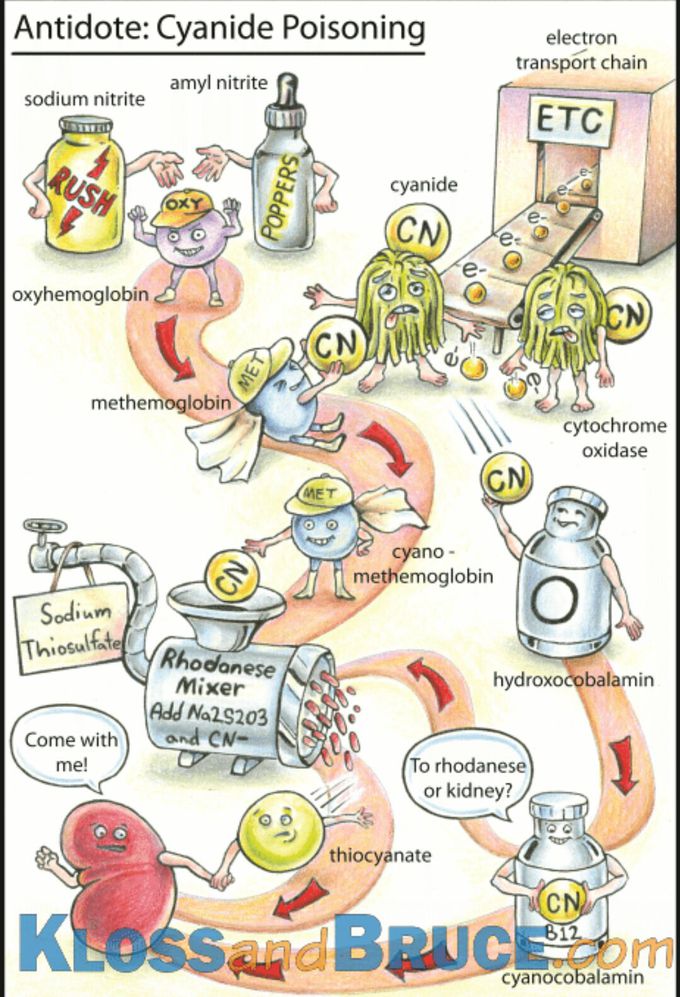


Antidote for cyanide poisoning
Sodium nitrite amyl nitrite and sodium thiosulfate are used as an antidote .. Sodium nitrite is rapidly effective but can cause life-threatening toxicity, whereas sodium thiosulfate has a somewhat delayed effect but is far safer. Sodium nitrite induces methemoglobin in red blood cells, which combines with cyanide, thus releasing cytochrome oxidase enzyme. Sodium thiosulfate donates a sulfur atom necessary for the transformation of cyanide to thiocyanate by rhodanese, thus increasing the activity of the endogenous detoxification system. The thiocyanate is then renally excreted. Hydroxocobalamin (also an antidote)combines with cyanide to form cyanocobalamin (vitamin B-12), which is renally cleared. Alternatively, cyanocobalamin may dissociate from cyanide at a slow enough rate to allow for cyanide detoxification by the mitochondrial enzyme rhodanese.
A 70-year-old man presents with difficulty walking, particularly when turning, and a sensation of his feet being "stuck" to the floor. His gait is characterized by hesitation and freezing when initiating steps. Which of the following is most likely to be observed in this patient? A. Spasticity B. Foot drop C.Freezing of gait D. Romberg signZELLWEGER SYNDROMEBest Probiotics For Womens 2025: Are They More Effective?LumiLean Dragons Den UK |Capsules, Reviews & Cost!
Preparation for USMLEEffects of sugar on teeth


